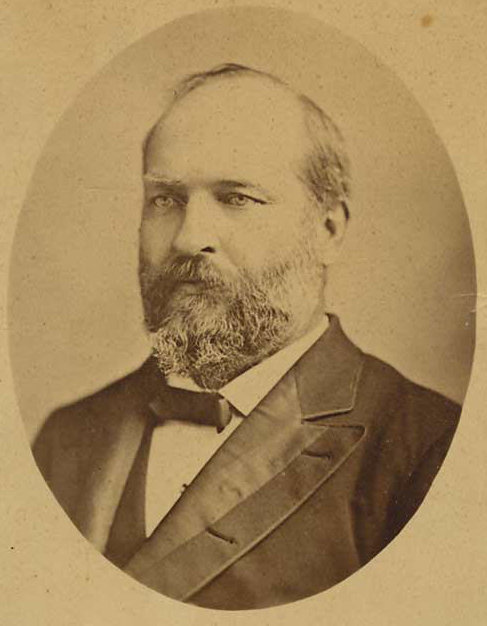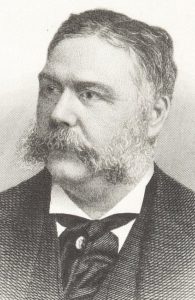
By Jim O’Neal
James A. Garfield was the second president to be assassinated, serving only 200 days as chief executive. For 80 of those days, he lay near death with a bullet lodged in his spinal area. He finally died after a bevy of doctors probed for the bullet with their germ-laden hands and instruments (the X-ray was 14 years in the future). He succumbed to the massive infection they unwittingly created.
The last president elected who was born in a log cabin, Garfield was a self-made man in the tradition of Horatio Alger (who was then at the height of his popularity). He worked as a canal boat boy at 17, became a college president at 26, and was the youngest general in the Union Army at age 30. After 17 years in the House and Senate, he became the leader of the Republican Party and was one of the finest orators of that era.
His predecessor, President Rutherford B. Hayes, wrote: “The truth is no man ever started so low that accomplished so much in all our history … not Franklin or Lincoln … He is the ideal candidate because he is the ideal self-made man.”
After being sworn in on the Capitol steps on March 4, 1881, the 49-year-old Garfield’s first act was to turn and kiss his aged mother … the first time a president’s mom was present at an inauguration.

Chester Alan Arthur, on the other hand, had never been elected to public office before becoming Garfield’s vice president, and he also had no leadership experience from the military. This was a first in American politics, where the word “politician” had become synonymous with “corrupt.” He was known as “The Gentleman Boss” of the Republican Party in New York City, always behind the scenes building the organization and managing the elections of others.
Only two years earlier, President Hayes had made Arthur the symbol of the evils of patronage by dismissing him as Collector of the Port of New York – an action hailed as a triumph of reform. No wonder that even a leading Republican exclaimed, “Chet Arthur President of the United States. Good God!”
The White House that greeted the new President Arthur was weathered by months of grief. Early autumn rains had soaked the crepe, sending streaks of black dye running down the chalky white walls. There had been no president in the White House for a month, and when Arthur examined the entire house, the disarray was depressing, with pipes for cooling still cluttering the floors upstairs, canvas pipes stretched up the stairwell, and others poking into the heating vents. Baggy summer slipcovers and naked, shuttered windows were everywhere. Some of the walls and ceilings were stripped and partially sanded, just as the painters had left them.
The wealthy new president took over the pathetic renovation that was under way and hired designer Louis Tiffany to renovate it completely in art nouveau style. He also added the elevator that had been ordered for Garfield. It was obviously not electric and required an elaborate hydraulic system that proved the source of endless problems.
Happily, all of the cleanup was completed – and the new president decided to clean up the civil service system, as well. He pledged to Congress to support any reasonable merit system they thought was practical and kept his word by signing into law the Pendleton Civil Service Reform Act on Jan. 16, 1883.
It is probably time to take another look at the current system, since a little sunlight is a good disinfectant.
 Intelligent Collector blogger JIM O’NEAL is an avid collector and history buff. He is President and CEO of Frito-Lay International [retired] and earlier served as Chairman and CEO of PepsiCo Restaurants International [KFC Pizza Hut and Taco Bell].
Intelligent Collector blogger JIM O’NEAL is an avid collector and history buff. He is President and CEO of Frito-Lay International [retired] and earlier served as Chairman and CEO of PepsiCo Restaurants International [KFC Pizza Hut and Taco Bell].
